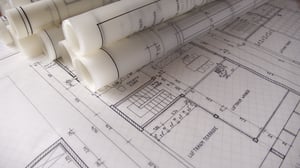 Most shoppers aren’t consciously aware of store layouts. However, virtually every shopper can instantly detect whether your space looks and feels interesting, convenient, and comfortable. That first impression determines whether they step further inside to browse. Once they’re in, your layout serves as a subtle roadmap, both luring and directing customers throughout your store.
Most shoppers aren’t consciously aware of store layouts. However, virtually every shopper can instantly detect whether your space looks and feels interesting, convenient, and comfortable. That first impression determines whether they step further inside to browse. Once they’re in, your layout serves as a subtle roadmap, both luring and directing customers throughout your store.
Your floorplan will point you toward fixture choices and all the other details that go into your visual merchandising. It can help shoppers find what they want, zero in on hot new items, discover a surprise must-have, snap up an impulse item, and leave well-pleased with their experience. This mini-guide to store layouts will help you get it right, from the ground up.
Universal Truths
Different traffic patterns work best for certain types and sizes of retail space. Nonetheless, some factors apply across the board.
- A welcoming “lobby” just inside the door is essential. Shoppers pause there, glancing around to get their bearings and see what’s on offer. Keep that space clear, so they aren’t distracted or put off by clutter. Think 5-15 feet, depending on store size.
- Almost every American automatically looks and turns to the right when they enter a store. Go with the flow, with a layout that guides in a more-or-less counter-clockwise tour.
- Americans also value their personal space in public, so aisles must be wide enough to avoid the dreaded “butt-brush” effect.
Pick a plan, then make it your own
Branding your store with your unique persona starts with creating a layout that reflects your products, customers, and the size and shape of your space.
Grid Layout
A grid layout is purely practical, with long straight aisles, like a grocery store or pharmacy. This is a great way to display lots of merchandise per foot, and it helps frequent shoppers find repeat purchases easily. But its rigid visual structure won’t do anything for your ambiance.
Herringbone Layout
A herringbone layout provides the benefits of a grid but fits better in a small or long-and-narrow space. Libraries and hardware stores often choose this arrangement.
Loop Layout
A loop, or racetrack, layout draws customers in a circuit around the store. You can modify the loop with side-paths, or by putting a different style layout in its center. This layout ensures customers actually see everything, which is good if you sell browse-friendly merchandise, but not if you’re a convenience-store.
Free-Flow Layout
A free-flow layout can feel more upscale and personal. In fact, it’s a good choice for smaller, higher-end jewelry, apparel, etc. stores, where you want to feature fewer items. Displays, signage, and lighting take on even more responsibility for drawing customers around the store in a free-flow layout.
Many retailers like to use a blend of store layouts to give their space more character or help define “departments.” Some larger stores even connect their various layouts with a wide main aisle, or spine. Whatever layout(s) you choose, remember to put your cash wrap toward the end of your customer’s in-store journey (toward the front, to the left), so you’re right at hand when they’re ready to pay for their selections.